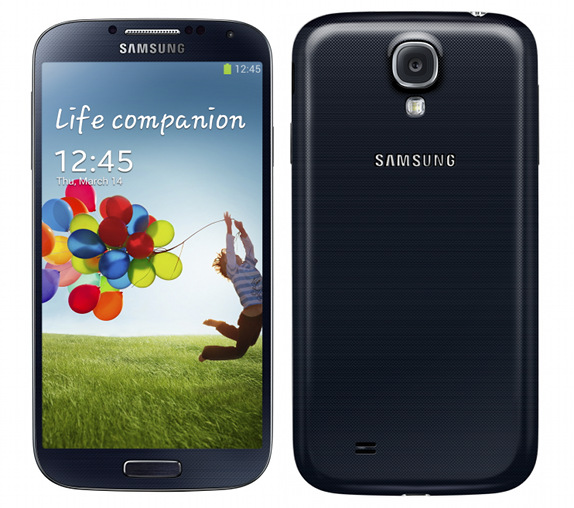1) The Samsing Galaxy SIV is all plastic -
 Wrong! It's Corning Gorilla Glass 3 on the front which is 3 times more resistant than the GG2, plus poly-carbonate plastic (like the Lumia 920) on the side and removable back. In all likeliness it'll take various hits better than slim brushed metal or regular glass with older screen protective technology
Wrong! It's Corning Gorilla Glass 3 on the front which is 3 times more resistant than the GG2, plus poly-carbonate plastic (like the Lumia 920) on the side and removable back. In all likeliness it'll take various hits better than slim brushed metal or regular glass with older screen protective technology
2) The Samsung Galaxy SIV design is the same -
Wrong! The subtle differences are noticeable in hand according to those touching. It's thinner, lighter, slightly less rounded and at 79%, it's the most screen-dominant of any phone on the market
3) Same old AMOLED -
Wrong! While screen tech is not labeled as new (not sure if it's the PHOLED variant), but it has a new hexagonal sub-pixel arrangement, more brightness according to testers and less blueish tinting
4) No real innovations, just overblown S3 functions - Think again. Floating Touch with AirView functionality, input through gloves, new gesture controls and eye-tracking features, barometer, thermometer, health equipment compatibility, IR sensor and remote control, much larger camera sensor and lens with new function, big jump in HW performance and battery, SW designed for fresher OS, more NFC functions (VISA payment), wireless charging
5) Octa-core is a marketing gimmick -
 Wrong
Wrong
6) 13MP is a marketing gimmick, it doesn't have more details -
You sure? more here
7) Bigger screen, more uncomfortable use -

Wrong! The Galasy SIV is actually smaller than it's predecessor and it's smaller and lighter overall than the HTC One, Droid DNA, XPeria Z and Oppo Find 5 wile featuring the largest battery at 2600mAh
 Wrong! It's Corning Gorilla Glass 3 on the front which is 3 times more resistant than the GG2, plus poly-carbonate plastic (like the Lumia 920) on the side and removable back. In all likeliness it'll take various hits better than slim brushed metal or regular glass with older screen protective technology
Wrong! It's Corning Gorilla Glass 3 on the front which is 3 times more resistant than the GG2, plus poly-carbonate plastic (like the Lumia 920) on the side and removable back. In all likeliness it'll take various hits better than slim brushed metal or regular glass with older screen protective technology2) The Samsung Galaxy SIV design is the same -
Wrong! The subtle differences are noticeable in hand according to those touching. It's thinner, lighter, slightly less rounded and at 79%, it's the most screen-dominant of any phone on the market
3) Same old AMOLED -
Wrong! While screen tech is not labeled as new (not sure if it's the PHOLED variant), but it has a new hexagonal sub-pixel arrangement, more brightness according to testers and less blueish tinting
4) No real innovations, just overblown S3 functions - Think again. Floating Touch with AirView functionality, input through gloves, new gesture controls and eye-tracking features, barometer, thermometer, health equipment compatibility, IR sensor and remote control, much larger camera sensor and lens with new function, big jump in HW performance and battery, SW designed for fresher OS, more NFC functions (VISA payment), wireless charging
5) Octa-core is a marketing gimmick -
 Wrong
Wrong6) 13MP is a marketing gimmick, it doesn't have more details -
You sure? more here
7) Bigger screen, more uncomfortable use -

Wrong! The Galasy SIV is actually smaller than it's predecessor and it's smaller and lighter overall than the HTC One, Droid DNA, XPeria Z and Oppo Find 5 wile featuring the largest battery at 2600mAh




